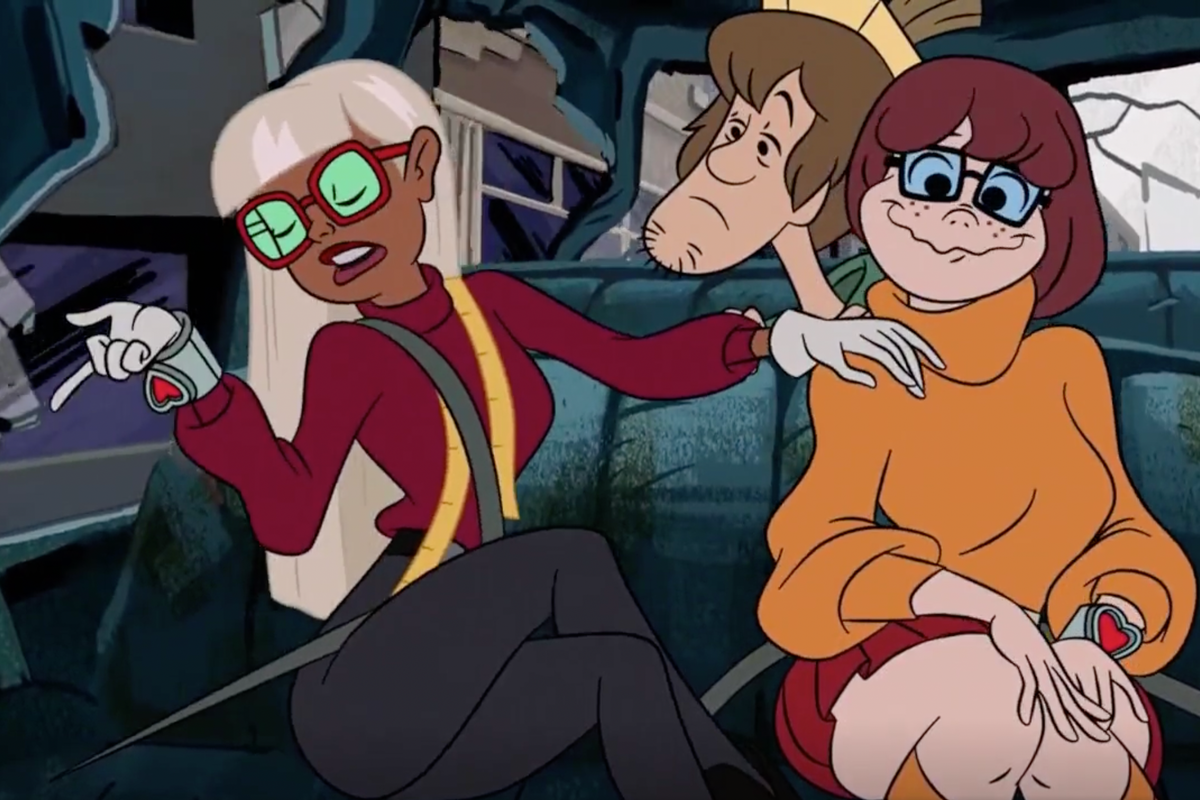Fans are rejoicing after seeing Velma meet the girl of her dreams on 'Scooby Doo'
Velma has long been a beloved LGBTQ icon.

They have matching bracelets. I can't!
Bespectacled mystery solver and “Scooby Doo” fan favorite Velma Dinkley has a new girlfriend and the internet is here for it.
A viral clip from the new animated movie “Trick or Treat Scooby-Doo!” shows the iconic nerd girl full-on swooning over costume designer and crime boss Coco Diablo (coolest name ever). Velma fawns over the other woman’s “amazing turtleneck,” “incredible glasses,” and obvious intellect and love for animals, and jinkies, is it adorable.
It might feel like a plot twist to some, but for most diehard fans and the major creatives behind “Scooby Doo,” the character’s sexuality was no mystery.
In a since deleted tweet, writer/director James Gunn revealed that he tried to make Linda Cardellini’s Velma “explicitely gay” in the live action “Scooby Doo" movies from 2002 and 2004. However, Warner Bros. slowly phased out and “watered down” any story points showcasing her homosexuality.
OMG LESBIAN VELMA FINALLY CANON CANON IN THE MOVIES LETS GOOOOOO pic.twitter.com/0ilx2uid1q
— Trin 🎃 (@MythicalLlamaXO) October 3, 2022
Tony Cervone, supervising producer on the successful fan series “Mystery Incorporated,” seconded Gunn’s opinion. According to TODAY, during Pride Month of 2020 he wrote on Instagram, “I’ve said this before, but Velma in ‘Mystery Incorporated’ is not bi. She’s gay. We always planned on Velma acting a little off and out of character when she was dating Shaggy because that relationship was wrong for her and she had unspoken difficulty with the why. There are hints about the why in that episode with the mermaid, and if you follow the entire Marcie arc it seems as clear as we could make it 10 years ago. I don’t think Marcie and Velma had time to act on their feelings during the main timeline, but post reset, they are a couple. You can not like it, but this was our intention.”
Velma’s gayness traces all the way back to the original series. As Bitch Media states, show creators William Hanna and Joseph Barbera based the character on child actress Sheila Kuehl, who played a tomboy in the 1950s family series “The Stu Erwin Show.” Coincidentally—or perhaps not—Kuehl later became the first openly gay California legislator.
Velma has long been a beloved LGBTQ icon. Sure, she’s a fictional character, but it’s making a lot of people happy to see themselves represented through her in such a positive light. May we all be inspired to live authentically—even if that means sporting a pixie cut, throwing on some knee highs and figuring out which adults are supernatural creatures in disguise while falling in love with whoever we please.

